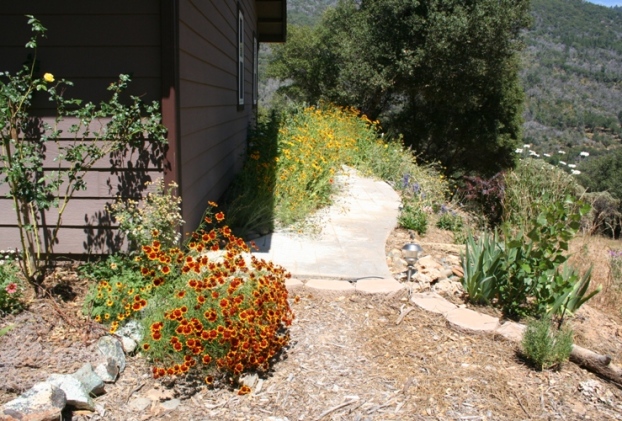Notes on first planting Western Wildflower Mix in North Fork, CA (near Yosemite) Zone 7, 3000 ft.
Here is what I planted in order, from most to least, of how many bloomed and how long they stayed in the garden:
Still appear plentifully in the garden
Chrysanthemum maximum Shasta-Daisy
Coreopsis lanceolata — Lance Leaf Coreopsis or Tickseed
Rudbeckia hirta Black-Eyed-Susan
Eschscholzia californica California Poppy
Linum perenne lewisii Wild Blue Flax
Oenothera elata hookeri Hooker’s Evening Primrose
Nemophila maculata Five Spot
Nemophila menziesii Baby Blue Eyes
Appearing in a few places after
Centaurea cyanus — Bachelor Buttons, Cornflower
Delphinium ajacis (Consolida ambigua) Rocket Larkspur
Coreopsis tinctoria — Plains Coreopsis
Clarkia amoena — Farewell to Spring
Linum grandiflorum var. rubrum — Scarlet Flax
Erysimum cheiri Wallflower
Did not reseed
Silene armeria Sweet William Catchfly
Papaver rhoeas Corn Poppy
Lupinus succulentus Arroyo, Hollowleaf or Succulent Lupine
Linaria maroccana Toadflax or Baby Snapdragons
Dimorphotheca aurantiaca African-Daisy
Never appeared
Phacelia campanularia California Bluebells
Gaillardia pulchella — Indian Blanket
The second year, without sowing any further seeds, the Rudbeckia dominated and then the third year the Shasta daisies were the major flower still reseeding.
I decided to switch to native CA wildflower seeds as I’ve become more aware of the suitability of CA seeds for my area, although I was very happy with Wildflower Farms seeds , the result and especially their service.
I can’t stress enough the necessity for following the excellent instructions for preparing the ground for these seeds given by Wildflower Farms and Judith Larner Lowry on her site. The image of you tossing seeds out in a field or throwing ‘seed-bombs’ just isn’t realistic.




